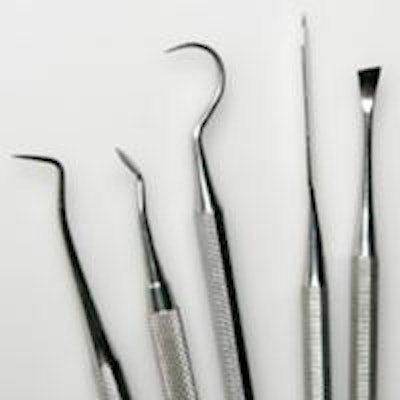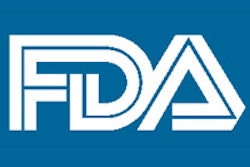
Your dental practice uses a range of devices every day but do you consider that some of them come with the slight risk of accidents or injury?
A new study in the Journal of the American Dental Association has found that 28,046 adverse events associated with dental devices were reported to the U.S. Food and Drug Administration (FDA) during the 15-year period from 1996 to 2011.
Adverse events are defined by the FDA as any undesirable experience associated with the use of a medical product in a patient. Once manufacturers or distributors become aware of device-related adverse events such as deaths, serious injury, or malfunctions, they are obligated to report it to the FDA within 30 days, the study authors noted.
Study author Muhammad Walji, PhD, the associate dean for technology services and informatics and an associate professor of diagnostic and biomedical sciences at the University of Texas School of Dentistry at Houston, told DrBicuspid.com that their research focuses on improving the safety and quality of oral healthcare.
“Once we identify, understand, and characterize these adverse events, we can then work on ways to prevent or minimize them in the future”
"Currently, little is known about the types of adverse events that occur in dental settings," he said. "Once we identify, understand, and characterize these adverse events, we can then work on ways to prevent or minimize them in the future."
The study aimed to determine the frequency and type of these events as reported to the FDA Manufacturer and User Facility Device Experience (MAUDE) database (JADA, February 2015, Vol. 146:2, pp. 102-110). The database contains a narrative description of the reported event, the occupations of the reporters, patient and device problems, and the results of manufacturers' evaluations and conclusions about reported events.
The MAUDE database is one of the few resources available that can help researchers identify adverse events that relate specifically to dental devices, Walji explained.
"We found that 1.4% of the nearly 2 million reports to MAUDE during the study period are due to a dental device," Walji said. "We also found that while most of these adverse events result in some sort of injury, there were some cases that reportedly resulted in death."
"By quantifying the frequency and type of dental [adverse events] reported into MAUDE since its inception, we aimed to update the dental profession's understanding of device-related threats to dental patient safety," the study authors wrote.
This work is important since dentistry does not have the same extensive patient safety literature as medicine and medical devices often do. Also very few studies or reports have been conducted about errors or adverse events in dental practices, they added. Some reasons for this could be that dental devices cause less harm, follow-up is more difficult in a dispersed ambulatory setting, dentists may fear impact on remunerations, and there may be gaps in dentistry's patient safety culture.
Walji and his colleagues built upon previous work done on this topic by reviewing reports submitted to MAUDE from January 1, 1996, through December 31, 2011.
Of the nearly 2 million reports deposited into MAUDE, of which 28,046 were associated with dental devices. Of these, 66 reports involved deaths, 17,261 reported injuries, and 7,777 reported device malfunctions. A total of 26,691 of these reports were mandatory (23,583 manufacturers' reports, 2,968 distributors' reports, and 140 reports from user facilities), while 1,355 were voluntary.
Dentists submitted 17,387 (62.0%) of the 28,046 reports. The next most common reporters were physicians (4.4%). Other reporters included patients, dental assistants, dental hygienists, attorneys, biomedical engineers, physician assistants, radiological technologists, and patient family members or friends, among others.
The authors presented the top 20 dental devices associated with adverse events, with endosseous dental implants being by far the most commonly represented. A total of 15,267 (53.5%) reports involved endosseous implants, which had 27 different types of problems associated with them. The most common problem was failure to osseointegrate, followed by loss of osseointegration.
The second most mentioned dental device was reported significantly less than implants. Denture adhesives had 1,426 reports, which represented only 5.0% of the device-associated reports.
Bone-cutting instrument and accessories made up 1,278 (4.5%) of the reports, and dental hand instruments (endodontic file) came in fourth with 815 (2.9%) reports.
The study researchers were not really surprised by the findings, Walji told DrBicuspid.com.
"In fact, due to underreporting, the number of reports we found are likely to grossly underestimate the actual number of device-related adverse events in the real world," he said.
The authors did note that although MAUDE is the sole source of information on adverse events, their investigations showed that it has substantial limitations, such as the content of the MAUDE reports is not extensively validated, an event may have more than one report, and the severity of the event is not always classified.
Walji and colleagues hope this research will start the conversation that adverse events do occur in practice.
"Dentists and their team members play a key role in reporting and recognizing these kinds of adverse events," he concluded. "Identification of dental adverse events is a critical first step before we can implement solutions to address them."



















